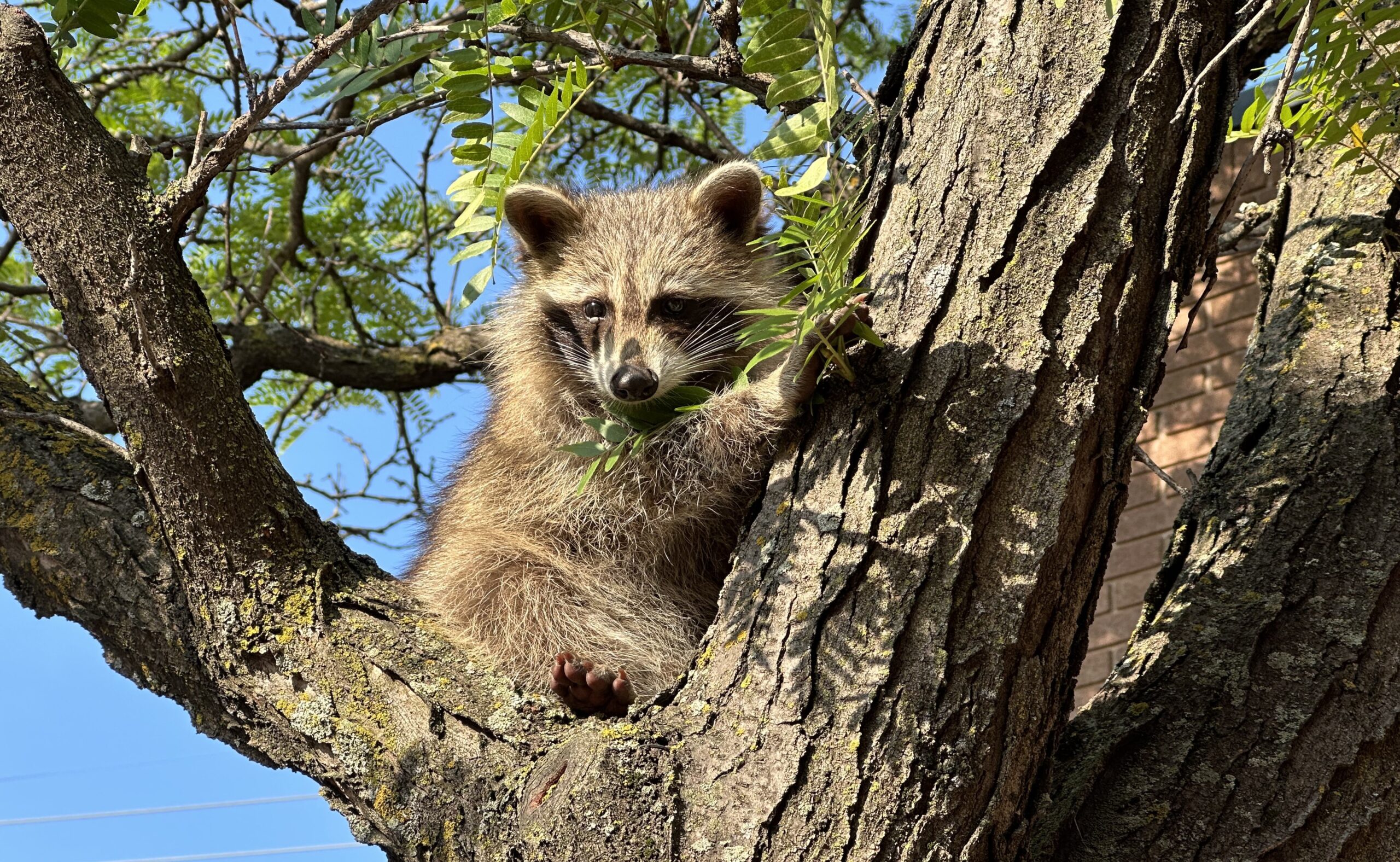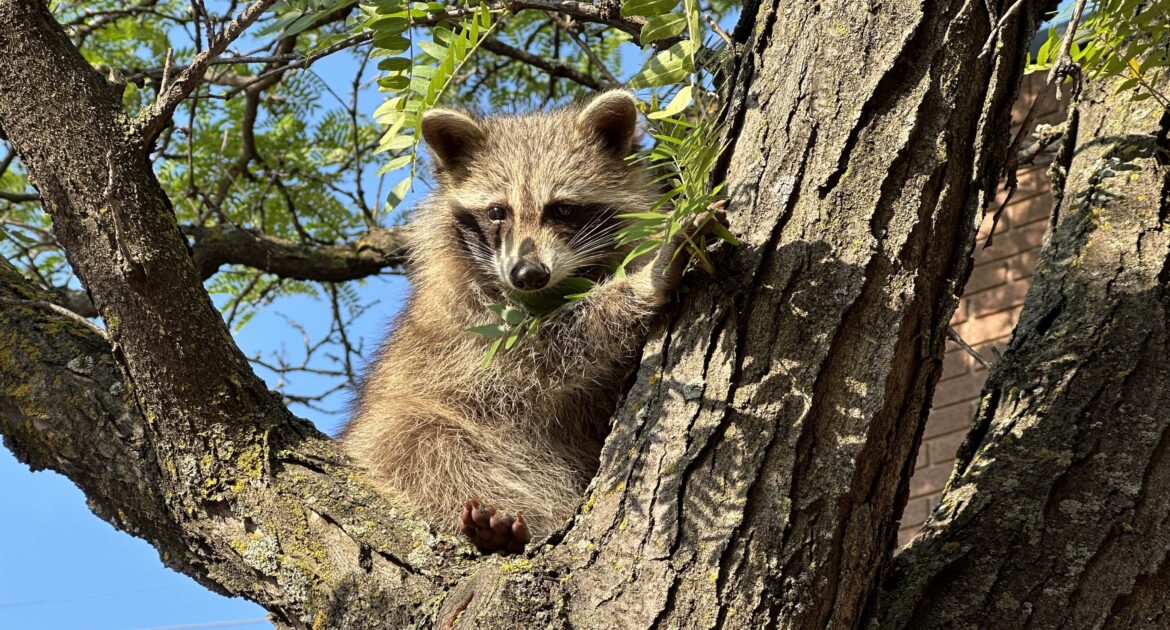Spring is here! As snow melts and flowers bloom, animals like raccoons, squirrels, and skunks become more active around your home. That’s why now is the perfect time for a spring wildlife inspection.
During winter, animals often take shelter in warm spots, like your home. By spring, signs of their activity can appear, such as noises, damage, or droppings. Catching these issues early can save you from costly repairs later.
At Skedaddle Humane Wildlife Control in Ottawa, we’re here to help you protect your home and keep it wildlife-free. Here’s why spring is the ideal time for an inspection and what you should watch for!
Animals Become More Active
Early spring is when animals start moving again after a long winter. During the colder months, they may have taken shelter in your attic, walls, or even under your deck. Now that temperatures are rising, they’re becoming more active and easier to spot.
This makes it the perfect time to check for signs of wildlife activity before problems escalate. Look for evidence like new entry points or nesting materials around your home.
Spring isn’t just about warmer weather—it’s also a major mating season for many animals. They’re searching for safe spaces to raise their young, which can make your home an appealing target.
By inspecting your property now, you can address issues before they get worse. It’s much easier to safely encourage animals to leave before babies are born, avoiding further damage. If you’re unsure what to look for, consider getting a professional wildlife inspection. Experts can help identify any uninvited guests and recommend the best solutions.
Preventing Structural Damage Before It Worsens
Winter can invite unwelcome guests into your home, as animals seek shelter from the cold. While they may seem harmless at first, these critters often leave behind damage that can turn into costly problems if not addressed.
Identifying and repairing these issues in the spring is essential to maintaining the safety and integrity of your home.
- Chewed electrical wires that pose a serious fire hazard
- Damaged insulation that increases energy costs by reducing efficiency
- Gaps or cracks in wooden beams that weaken the roof or walls
Addressing these problems as soon as wildlife leaves your home can prevent them from escalating. Spring is the perfect time to act, as animals are more likely to be moving on and haven’t settled in with their young.
Don’t wait until the damage worsens—take action now to protect your home and avoid bigger headaches later.
Ideal Weather for Inspections and Repairs
Spring weather makes everything easier, especially when it comes to checking your home for wildlife issues and fixing problems. Gone are the freezing temperatures and icy conditions that can make inspections difficult or even dangerous. Instead, warmer days provide a safer and more practical time to get outside and look for trouble spots.
This nicer weather also creates ideal conditions for repairs. Whether you’re sealing up gaps, reinforcing vents, or repairing shingles, spring gives you the chance to secure your home before summer arrives. This can help prevent even more wildlife from moving in when next winter comes around.
The comfortable temperatures also mean animals are more likely to choose to leave rather than stay hidden away when a one-way door is installed. If you’re working with humane wildlife specialists like Skedaddle, this is the perfect time to secure your home while ensuring animals are not harmed during the process.
Identifying Signs of Wildlife in Your Home
Wondering if animals have made themselves at home in your house? Here are some of the most common signs to watch out for:
- Strange Noises: Hearing scratching, rustling, or scurrying in your walls or ceiling? Animals like squirrels or raccoons are likely moving around your attic or crawlspace. Chattering sounds could mean they’ve already nested with their babies. Listen carefully, especially at night when it’s quiet.
- Damage Around the House: Chewed wires, shredded insulation, or gnawed wooden beams are clear signs of wildlife. Check for holes in your siding, roof vents, or soffits where animals might have forced their way in. Spot damage? Act fast to prevent it from getting worse.
- Droppings and Tracks: Found animal droppings in your attic, basement, or along entry points? You might also see small footprints in dusty areas or tail marks in insulation. Don’t clean it up yourself—call a professional to handle it safely.
- Bad Smells: A strong, musty odour in your attic or crawlspace? It could be from urine-soaked insulation or decomposing materials left by animals. If something smells off, it’s time to investigate or get expert help.
Spotting these signs early can save you a lot of time and money. By knowing what to look for, you’ll be one step ahead in protecting your home from unwanted visitors.
Seasonal Home Maintenance: Preventing Wildlife Entry
Doing regular maintenance can make a big difference in keeping animals out of your home. Here are some easy steps you can take this spring:
- Inspect the Roof and Attic: Walk around your home and check for loose shingles, damaged vents, or gaps in the roofline. These are common entry points for wildlife. Reinforce any weak areas and consider installing vent covers to keep animals out.
- Seal the Foundation: Cracks or gaps in your foundation or basement can be another way wildlife sneaks in. Sealing these up with caulking or foam will not only prevent animals but also keep drafts away.
- Secure Trash Bins: Many animals, like raccoons, are drawn to easy food sources. Use wildlife-proof lids on your garbage bins to keep scavengers at bay. Adding this simple step can stop them from getting too comfortable near your home.
- Trim Trees and Bushes: Branches that are too close to your home act as a bridge for animals to access your roof or attic. Keeping them trimmed back will make it harder for wildlife to find their way in.
- Seal Entry Points: Check vents, chimneys, and other possible entryways for gaps. Use sturdy mesh covers over vents and patch any holes to keep creatures out. This reinforces your home’s defences.
Taking these steps each spring as part of your seasonal home maintenance can help you prevent future wildlife issues, saving effort and money in the long run.
Spring Is Nature’s Alarm Clock (And Time for Action)
Spring is here, and along with warmer weather comes increased wildlife activity. Animals waking up from winter can sneak into your home, turning small issues into big problems. A spring wildlife inspection is your chance to spot and fix these signs early for peace of mind.
At Skedaddle Humane Wildlife Control in Ottawa, we use safe, humane methods to remove animals without harming them. Our one-way doors and other strategies ensure they leave—and don’t come back. Plus, we’ll help you animal-proof your home to prevent future visits.
Adding seasonal home maintenance to your routine keeps your house safe and comfortable for your family and ensures unwanted wildlife stays out. Don’t wait to act. Protect your home and enjoy spring worry-free!




